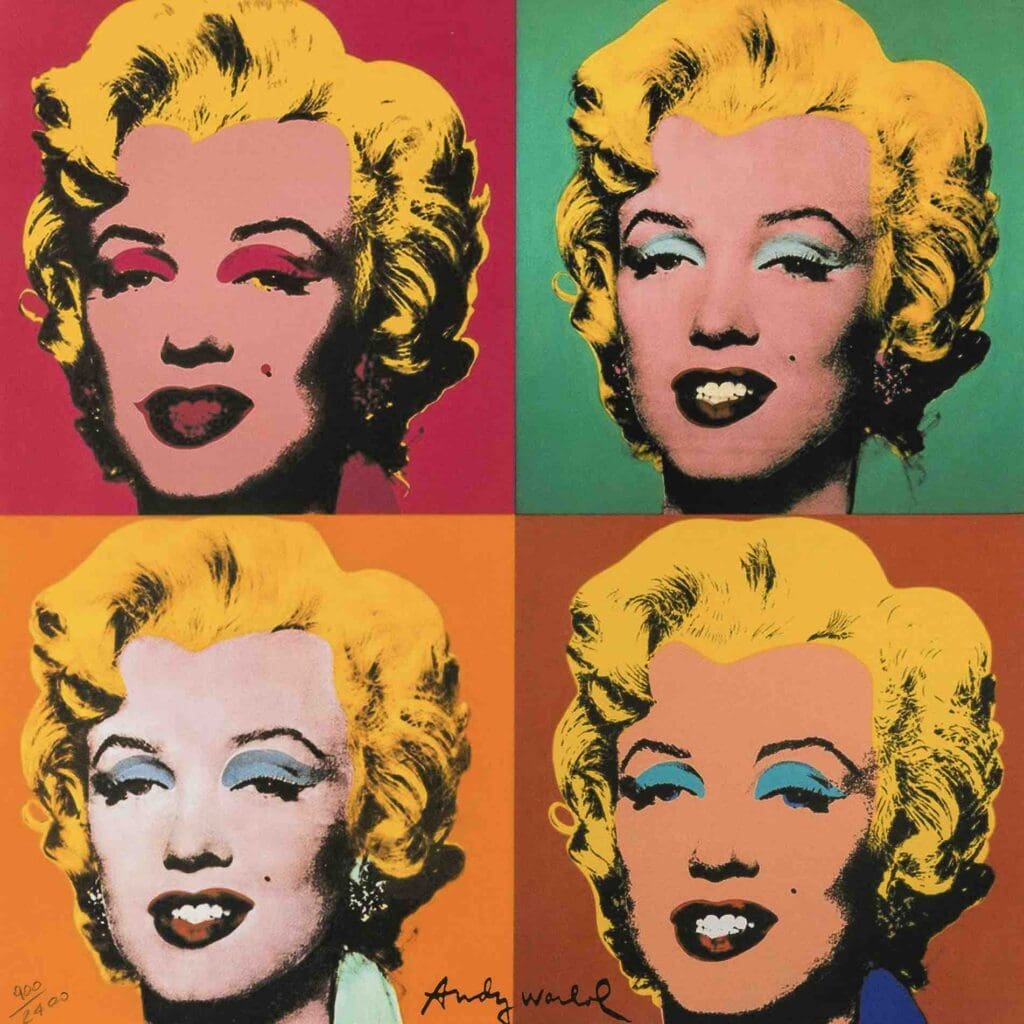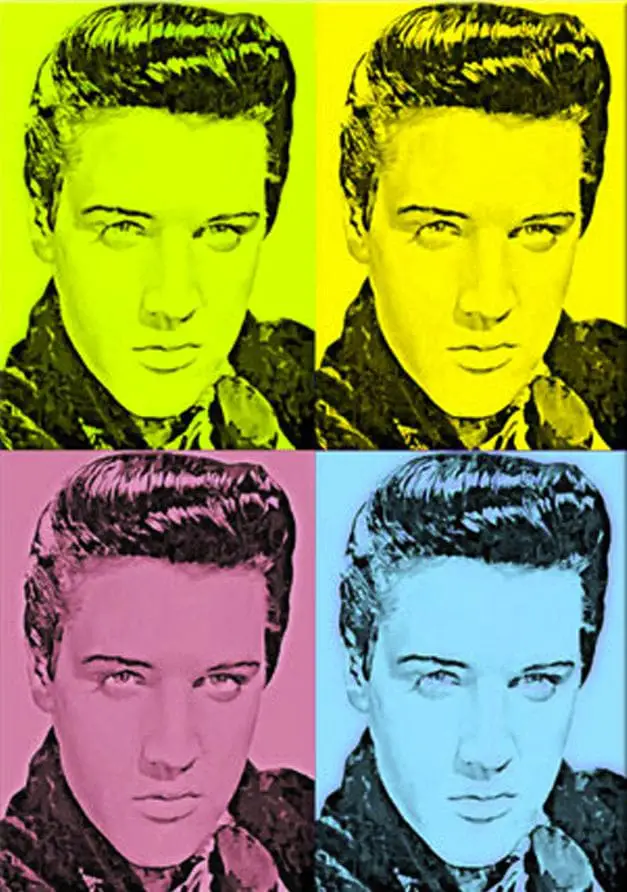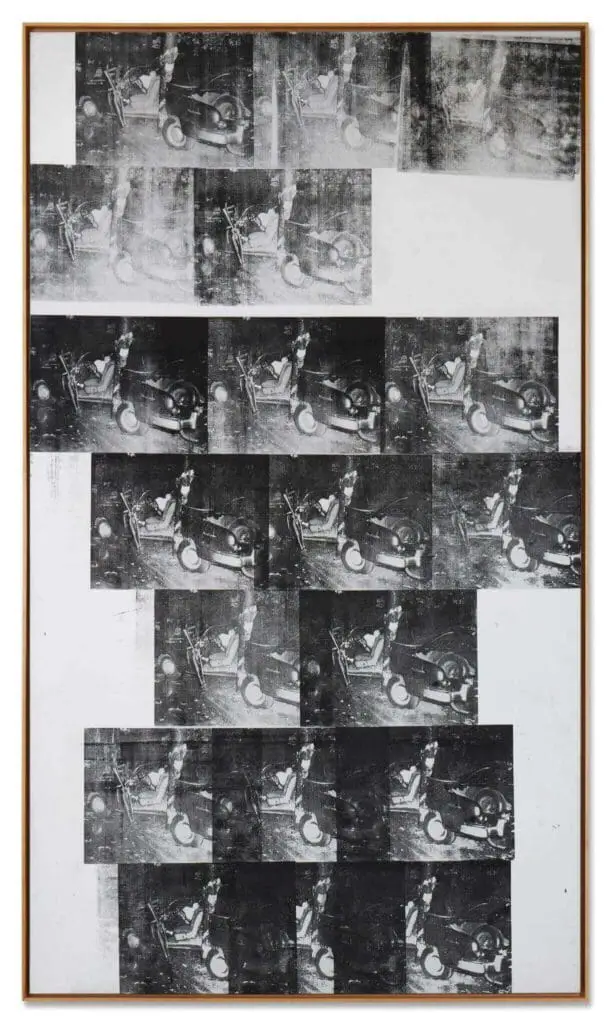Andy Warhol’s art can be considered a visual diary, chronicling cultural shifts in our society. A significant voice in the Pop Art Movement, Warhol used his iconic style to critique and comment on societal norms, focusing mainly on the impact of celebrity culture and hero worship.
Andy Warhol often understated the depth of his work; the relentless repetition and striking color choices in his pieces tell a compelling story of fame, obsession, and consequences. Beneath the surface of his vibrant screenprints and the art of celebrities like Marilyn Monroe and Elvis Presley, a critique was building. The deification of these figures made evident through repeated, commodified images, reflected the culture of hero worship and the unsettling replacement of traditional deities with celebrity icons.
Table of Contents
- Andy Warhol: A Commentary On Our Culture Of Hero Worship And Its Consequences
- Warhol’s Subtle Social Commentary
- Frequently Asked Questions
- Related Questions
Andy Warhol: A Commentary On Our Culture Of Hero Worship And Its Consequences
Andy Warhol’s works highlighted celebrities’ superficial lives, masked by the glamour and glitz of their public personas. The resulting prints, often bright and captivating, contrasted with the reality they encapsulated, critiquing our society’s obsession with fame and the subsequent desensitization to the dark side of such notoriety.
AndyWarhol’s’ work continues to provide insights into the often unseen consequences of our culture’s hero worship, serving as a potent critique of societal norms and celebrity culture.

Andy Warhol – A Pop Art Icon
Andy Warhol, an iconic figure in the Pop Art movement, is famous for his portrayal of mundane objects and popular cultural icons. His art is synonymous with the zeitgeist of a specific era, commenting on various aspects of society and our interactions with it.
His exploration of celebrity culture and hero worship is particularly striking, which shines through in his many paintings of superstars like Marilyn Monroe and Elvis Presley. While Warhol himself often dismissed more profound interpretations of his work, preferring to maintain an air of ambiguity and irony, his art serves as a powerful critique of societal norms and trends.
The Deification Of The Famous: Marilyn And Elvis
Perhaps Warhol’s images of Marilyn Monroe and Elvis Presley are the most emblematic of this critique. Through the lens of Warhol’s vibrant silkscreen prints, Monroe and Presley are transformed from mere celebrities into omnipresent symbols, replacing traditional religious deities in our consciousness.

Repeatedly printing their faces on canvas, Warhol showed us the mass production of fame, reflecting our society’s infatuation with celebrity culture. But these aren’t just straightforward portrayals; his prints comment on the hero worship prevalent in our society, an obsession that often ignores the very human realities behind these icons.

Moreover, Warhol’s signature style, characterized by a noticeable absence of the artist’s hand, mirrors the industrial nature of celebrity manufacturing, underlining the hollowness of fame. It’s as if the subjects were stripped of their individuality, and reduced to identical, emotionless copies, highlighting the commodification of their personas.
Warhol’s use of intense, even lurid colors on the faces of Monroe and Presley adds an extra layer of irony. Their vibrantly colored faces express a joyous public person. Still, their vacant, untouched eyes hint at an underlying melancholy, the darker side of fame often hidden beneath the glamour and glitz.
Superficial Life, Real Consequences – Andy Warhol Prints
Warhol had a knack for amplifying the superficial aspect of his subjects, and by doing so, he uncovered the hidden depths beneath. His series of prints depicting car crashes, electric chairs, and wanted fugitives transforms the superficiality into something more grim.

These images, born from media coverage of tragic incidents, are rendered in a style typically reserved for celebrity portraits, thus unearthing the disturbing reality of our media’s desensitization to violence and tragedy. The repeated, serialized prints amplify this effect, reflecting society’s numbness towards these horrifying events.

The electric chair series, especially, encapsulates this concept. The same image, printed repeatedly, highlights the chilling banality of a mechanism designed for execution. This could be seen as Warhol’s commentary on how the media’s sensationalized coverage can trivialize even the most serious subjects.
Warhol’s Subtle Social Commentary
To truly grasp the essence of Andy Warhol, it’s essential to recognize that he was not merely an artist but also a social commentator. Much of his artwork goes beyond aesthetics as a profound commentary on societal norms and behaviors.
Despite Warhol’s repudiation of the more profound interpretations of his work, it is hard to deny the apparent social commentary embedded within his art. Using celebrity figures and tragic imagery, he depicted the harsh realities of fame and societal indifference, mirroring a culture fascinated by celebrities and dulled to human suffering.
Even if Warhol merely professed to ‘like’ Marilyn and Elvis, the very choice of these subjects and how he portrayed them speaks volumes about the state of our society and its cultural values. The mass production of these celebrity icons, the exploration of their superficial lives, and the stark commentary on media desensitization all hint at the problematic nature of our culture of hero worship.
Warhol, thus, offers a commentary on the constructs of our society and the consequences of our obsession with fame and tragedy. By revealing the cracks beneath the glossy surface,
Andy Warhol’s art is a potent critique of societal norms and celebrity culture, questioning our relentless pursuit of fame and increasing desensitization to human suffering.
While Warhol may have been a purveyor of Pop Art, his work goes beyond the realm of the popular. It delves deep into the social fabric, exposing the societal obsession with celebrity culture, the superficiality of fame, and our troubling desensitization to violence and tragedy.
Whether he intended it or not, Warhol’s art serves as a powerful commentary on our society, offering a unique perspective on our culture of hero worship.
Anita Louise Art is dedicated to art education, great artists, and inspiring others to find and create their art. We love art that uplifts and inspires. #ArtToMakeYouSmile! #ArtToMakeYouHappy!
If you want to see any of my art, you can find out more by clicking here. If you are interested in what inspires me and my paintings, you can discover more by clicking here.
We have a free newsletter and would love you to be part of our community; you can subscribe to the newsletter by clicking here. If you have any questions, I would be happy to talk to you. You can reach me, Anita, by clicking here.
Subscribe to our Anita Louise Art YouTube Channel, filled with great videos and information by clicking here.
Join us for our podcast “5 Minutes With Art.” Spend 5 minutes a week with us to discover and learn about great art and artists. You can find out more about our podcast by clicking here.
Frequently Asked Questions
Who was Andy Warhol and what is he known for?
Andy Warhol was a renowned American artist known for his contributions to the Pop Art Movement. He gained fame for his unique style that used repetition and vibrant colors to depict celebrity culture and societal norms.
How did Andy Warhol’s art critique societal norms?
Warhol’s art critiqued societal norms by depicting and glorifying celebrities and consumer goods, which reflected the influence of mass media and consumerism on society.
What is the significance of repetition in Warhol’s art?
Repetition in Warhol’s art highlights the mass production and consumption of images, drawing attention to the pervasive nature of celebrity culture and the way these figures are idolized.
How did Warhol’s art reflect the impact of celebrity culture?
Warhol’s art depicted famous figures like Marilyn Monroe and Elvis Presley, showcasing the obsession with celebrities and their commodification in popular culture.
What is hero worship, and how did Warhol’s art explore this concept?
Hero worship is the adoration and idolization of individuals, often treating them as near-deities. Warhol’s art explored this concept by elevating celebrities to the status of icons through repeated images.
What message did Warhol convey through his art’s focus on celebrity icons?
Warhol’s art highlighted the unsettling trend of replacing traditional deities with celebrity figures, exposing the culture’s shift towards idolizing human beings rather than spiritual entities.
How did Warhol’s art impact the perception of fame and obsession?
Warhol’s art drew attention to the consequences of fame and obsession, revealing the superficiality and emptiness that can accompany the adoration of celebrities.
What is the connection between Warhol’s art and the deification of celebrities?
Warhol’s repeated, commodified images of celebrities echoed the process of deification, turning these figures into symbols of worship and consumerism.
Related Questions
When Did The Renaissance Start? Exploring The Cultural Rebirth
The Renaissance, a period of remarkable cultural, artistic, and intellectual growth, is often hailed as one of the most transformative eras in history. While its starting point is a subject of debate among scholars, most scholars feel the Renaissance started in the 14th Century in Italy. Then after that time, the Renaissance gradually unfolded across Europe, leaving a lasting impact on society.
By clicking here, you can learn more by reading When Did The Renaissance Start? Exploring The Cultural Rebirth.
Fine Art: Definition, Meaning, And Its Importance
Fine art encompasses many forms, including painting, sculpture, printmaking, photography, and architecture. Read on as we will explore the definition and meaning of fine art, examine its historical significance, and discuss the ten compelling reasons why understanding fine art is essential for artists and art enthusiasts alike.
By clicking here, you can learn more by reading Fine Art: Definition, Meaning, And Its Importance.
15 Most Famous Abstract Art And Why They Are Famous
There are many great abstract works of art, so choosing my favorite 15 works can be challenging. But we have chosen 15 of our favorite works of art and why we consider them to be not only famous but also why they are essential. Read on as we will explore 15 of the most famous abstract artworks, delving into the artists’ names, the years of creation, and the reasons behind their enduring fame.
By clicking here, you can learn more by reading 15 Most Famous Abstract Art And Why They Are Famous.


